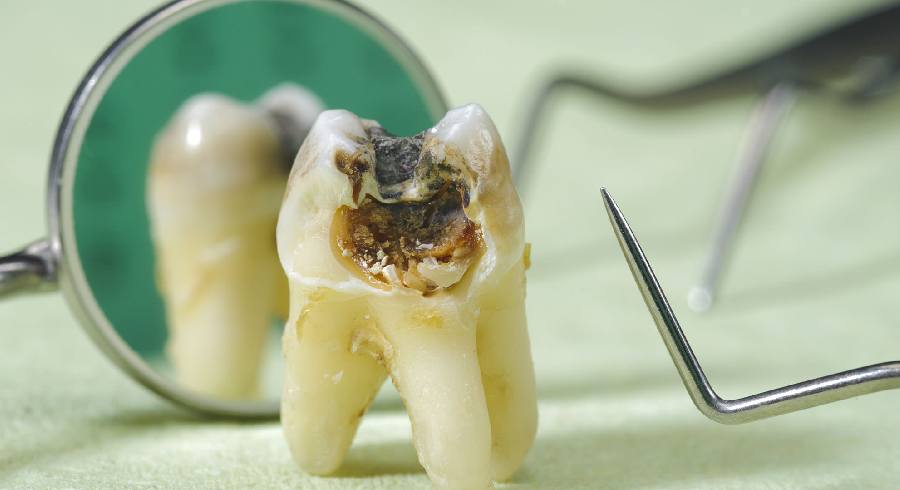Tooth decay is a progressive dental disease that damages teeth, resulting in cavities, abscesses and tooth loss. When tooth decay is discovered early, it can be treated by a professional and the aesthetic damage might be reverted with a quality smile makeover. Since it often happens in five different stages, recognising the signs of tooth decay might help one save their dental health.
What Causes Tooth Decay?
The main culprit of tooth decay is the plaque that forms on your teeth. When left uncleaned, this plaque produces an acid that damages your enamel and ultimately invades your tooth, causing an abscess.
This plaque may form due to various reasons, from dietary habits to consumption of substances. The most prominent reasons are:
-
Constant consumption of sugary processed food,
-
Sipping sugary drinks,
-
Use of alcohol, tobacco and drugs,
Also, it is worth noting that not paying enough attention to your dental hygiene may promote plaque formation.
5 Stages of Tooth Decay
Stage 1: Demineralisation
The first stage of tooth decay is called demineralisation. In this stage, the outer layer of the teeth, called enamel, begins to lose its minerals due to plaque accumulation. The bacteria in this plaque feed on sugar and release an acid onto the enamel, causing white spots on your teeth.
How to treat
At the initial stage of tooth decay, all you need is to remineralise your teeth with a fluoride treatment. Most of the time, your dentist will recommend fluoride toothpaste or fluoride water. However, in some cases, it may be necessary to receive a professional fluoride treatment from your dentist.

Stage 2: Enamel Decay
If demineralisation is left untreated, your enamel might break down further. The white spots we mentioned earlier will darken to a dark brownish colour. And as enamel loses its protectivity, small holes in your teeth - cavities - will form.
It is necessary to get treatment at this stage. Otherwise, your tooth might decay further and cause you great pain and an economic burden.
How to treat
Early-stage brown tooth treatment is effortless and preventive. The most common treatment at this stage is removing the decayed part and filling it with resin, ceramic, or a dental amalgam.
Stage 3: Dentin Decay
If the decay is left untreated, it might spread to the dentin layer of your tooth. Since dentin is softer than enamel, the decay in this area will be much faster.
The easiest way to determine if decay has spread to dentin is by testing your teeth's reaction to hot or cold beverages. If your teeth is too sensitive, you should immediately see your dentist for treatment.
How to treat
The treatment depends on how much the decay has advanced. If it is discovered early enough, dental filling might be sufficient. Nevertheless, if the decay has progressed, a crown placement will be necessary.

Stage 4: Pulp Damage
By this stage, decay will have reached the innermost layer of your tooth. This layer, known as the pulp, contains the nerves and blood vessels that keep your tooth healthy.
As the pulp provides sensation to the tooth via the nerves present there, decayed teeth can cause excessive pain and discomfort.
How to treat
Once the decay has reached the pulp and caused damage, immediate treatment is necessary to save your dental health. A root canal treatment is the only way to treat such a cavity. This treatment involves the removal of the infected pulp from the tooth. Afterwards, a dental crown is placed on the affected area to protect the nerves.
Stage 5: Abscess
At this stage, the bacteria will have already damaged the pulp and invaded the tooth, causing an infection. The infection will lead to a pocket of pus forming, called an abscess. It will also cause swelling, fever, and swollen lymph nodes in your neck.
If the abscess is spread further into your mouth, it might cause jaw bone damage. In some severe cases, a dental abscess might affect other bones in your neck and head. Therefore, abscesses should be treated as soon as possible and never be left unchecked.
How to treat
In this case, the treatment depends on the progress of the abscess. If it has not spread to your bones, a root canal treatment might be sufficient to save your tooth. Nevertheless, an advanced case of abscess might require tooth extraction.


